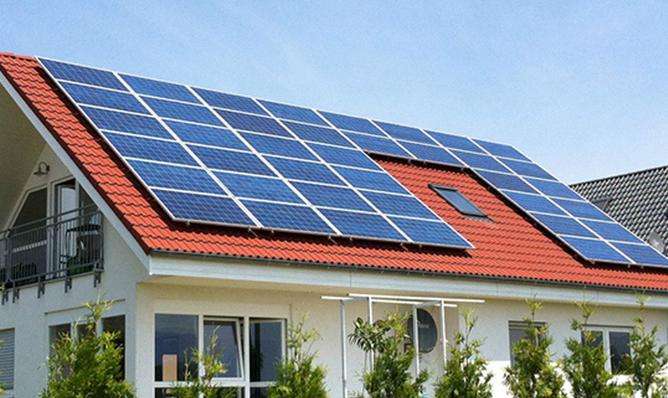The energy produced by power plants is nothing more than coal, oil, gas and some smaller proportions of fuels such as coal gangue and coal slime. Because the proportion of fuel and gas is lower than that of coal, in the traditional sense, coal-fired power generation is called coal-fired power plant or thermal power plant, or simply thermal power plant.
The thermal power plant refers to a power plant which, in addition to producing electricity, also provides heat (steam and hot water for residential or industrial use) and constitutes a special category of power plants thermal. When it comes to pollution, no one is lighter or heavier. The amount of heat generated and the amount of energy consumed are fuel. When the fuel and thermal mass generated remain unchanged, the pollutants also maintain a constant value, as well as pollutant emissions. are closely related to environmental protection parameters and facilities. The operational level also has a lot to do with it.
What principle does coal use to produce electricity?
Electric vehicles are not zero emissions: coal-fired electricity generation is energy efficient about 40%, which means a loss of 60% of energy. Transport and then...
November 30, 2020 Electric vehicles are not zero emissions: coal-fired electricity generation is around 40% efficient, which means a loss of 60% energy. Remove another 6% from the transmission and another 5% from the engine. 1*40%*94%*95%=35.72% should be similar to a fuel vehicle. Speaking of electric vehicles...
Snowball
Electric vehicles powered by coal and electricity are not as environmentally friendlyment that fuel-efficient vehicles - China Quality Assurance Center Fuzhou..
On February 28, 2021, it announced that the energy conversion efficiency of domestic coal-fired power generation is by 40% and that the efficiency of electric vehicles in converting electrical energy into the driving force of the wheels is 62%. efficiency is 40%
Coal uses the principle of energy conversion to produce electricity.
When fuel is burned, water is heated to generate steam, which converts the chemical energy of the fuel into thermal energy. The steam pressure causes the turbine to rotate and the thermal energy is converted into mechanical energy. The steam turbine then turns the generator, converting mechanical energy into electrical energy.
Coal has a wide range of uses, which can be summarized into three main uses depending on itsstination: thermal coal, coking coal and coal for chemical industry, including gasification coal, low temperature carbonization coal, and hydrogenation coal. Liquefied coal, etc.
(1) Coal for power generation: More than one-third of China's coal is used for power generation, and the average consumption of coal for power generation is approximately 370 g/(kW·h) of standard coal. Power plants use the calorific value of coal to convert thermal energy into electrical energy.
(2) Coal consumption for steam locomotives: accounts for approximately 3% of electric coal consumption. The average coal consumption index of steam locomotive boilers is approximately 100 kg/(10,000 tonnes·km).
(3) Coal for construction materials: it represents more than 13% of energy coal, cement usinghas largest quantity of coal, followed by glass, bricks, tiles, etc.
(4) Coal used in general industrial boilers: In addition to thermal power plants and large heating boilers, there are many types of industrial boilers used in general businesses and heating, and their quantities are large and dispersed. Coal consumption accounts for approximately 26% of thermal coal.
(5) Domestic Coal: The amount of domestic coal is also large, accounting for about 23% of the coal used as fuel.
(6) Metallurgical toolsEnergy coal: thermal coal used in metallurgy is mainly anthracite coal used for sintering and injection in blast furnaces, and its use accounts for less than 1% of energy consumption. energy coal.
Detailed information
Although China is relativelyrich in coal resources, its coking coal reserves are still relatively small, accounting for only 27.65% of coking coal reserves. China's total coal reserves.
Coking coal includes gaseous coal (accounting for 13.75%), fatty coal (accounting for 3.553%), main coking coal (accounting for 5.26%), lean coal (accounting for 4.01%) and others unclassified. coals (representing 0.55%).
Non-coking coal includes anthracite coal (accounting for 10.93%), poor coal (accounting for 5.55%), low-caking coal (accounting for 1.74%), non-coking coal (accounting for 1.74%), coke (representing 13.8%). and long flame coal (accounting for 13.8%), lignite (accounting for 12.76%), natural coke (accounting for 0.3%), unclassified coal (accounting for 13.80%) and coal unclear mark (representing 1.06%).
The main use of coking coal is the manufacture of coke. THECoke is melted from coking coal or mixed coal at high temperature. Typically, about 1.3 tons of coking coal can be used to make one ton of coke. Coke is mainly used in steel manufacturing and is the main raw material for the steel industry and other industries. It is known as the “staple” of the steel industry.
Baidu-Coal Encyclopedia (definition of the word)














